
— Bridie Schmidt
There’s nothing quite like a camping holiday to help Australian families reconnect — with nature, with each other, and increasingly, with a more sustainable way of travelling. As electric vehicles (EVs) become more popular and their ranges continue to improve, many families are discovering just how well EVs and camping go together.
What could be better than rolling quietly into your favourite national park or coastal hideaway without the usual roar of an engine or the smell of petrol or diesel fumes? The serenity of the bush or beach is enhanced when the only sounds you hear are birdsong and wind rustling through the trees. Thanks to the longer driving range of modern EVs and other innovations in EV technology, not only can you reach more remote campsites, but you can also power up your experience once you arrive.
Modern EVs are surprisingly well-suited to the camping lifestyle. One of the standout features is vehicle-to-load (V2L) capability, which allows you to use the car’s battery to power small appliances and electronics. This means you can enjoy a hot cuppa from an electric kettle, run a travel fridge for your snacks and drinks, inflate air mattresses, or even recharge phones, tablets, and Bluetooth speakers — all directly from your EV.
Some EVs even have features like Tesla’s Camp Mode , which allows the air conditioning or heating to run while the car is parked, without requiring the car to be fully running. This is a game-changer for comfort during the hotter days or cooler nights in the great outdoors. Want to watch a movie with the kids before bed? Many EVs support streaming apps or screen mirroring via your smartphone — turning your vehicle into a mini-theatre under the stars.
Sleeping in your EV is another increasingly popular option, especially for solo campers or small families. If your back seats fold flat, you can pop in a roll-up mattress or inflatable bed and sleep inside the car. Not only is it cozy and convenient, it’s also a great option for those nights when the weather turns or the bugs are out in force.
For those looking to expand their living space, tent extensions that attach to the rear of the vehicle are also a great choice. These give you an enclosed sleeping or sitting area, and if your EV supports it, you can even cool this extra space using the car’s climate control — without the need to run a noisy engine.
Just be mindful of your power usage. While it’s tempting to use your EV for everything, it’s wise to lean on campsite facilities for high-consumption needs like cooking or heating. If you do want to run your site entirely off your EV’s battery, opt for energy-efficient gear like LED lights and low-draw appliances. And remember, your EV consumes some battery power even when idle — typically around 7–10% overnight — so be strategic about what’s left running.
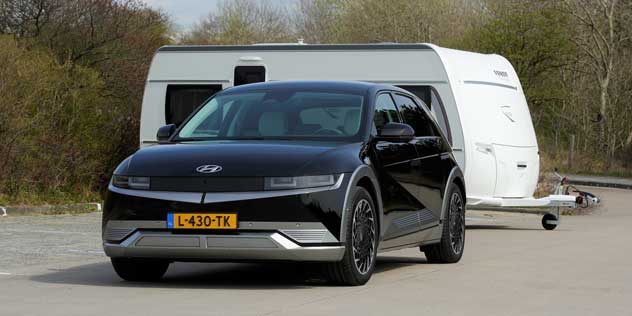
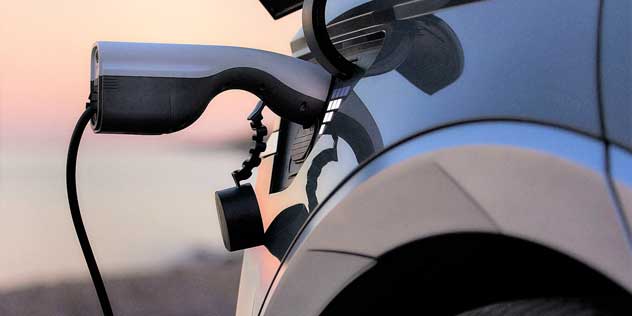
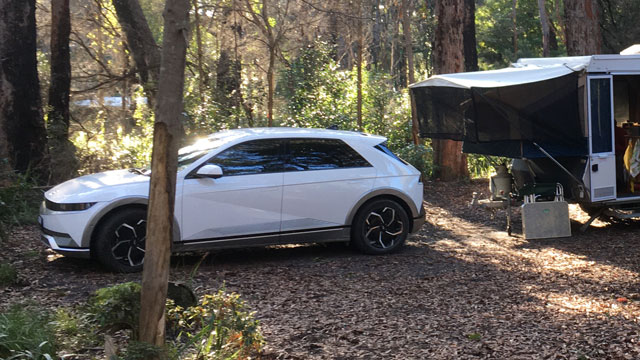
Yes, you can tow with an EV — but there are a few things to keep in mind. Many electric models now offer tow ratings suitable for small to medium trailers and caravans.
However, it’s important to understand how towing affects range. Much like with petrol or diesel cars, added weight significantly increases energy consumption.
According to Tim Pomroy’s range test looking at if an EV can tow a trailer in 2023, a 400kg trailer with a 230kg payload increased energy consumption of the Polestar 2 by around 42 per cent, with a resultant reduction in range. Towing a full-sized caravan could cut your range in half — or more. That’s a big deal when DC fast chargers are still not as widespread as traditional petrol stations.
That’s not to say it can’t be done however. EV owners often opt for low, pop-up style caravans (such as the McLennans who drove their Kia EV9 around Australia with a caravan) or lightweight, aerodynamic teardrop style caravans, to minimise the impact of the added weight when driving. You’ll also want to plot your trip carefully using route-planning tools tailored for EVs (more on that below).
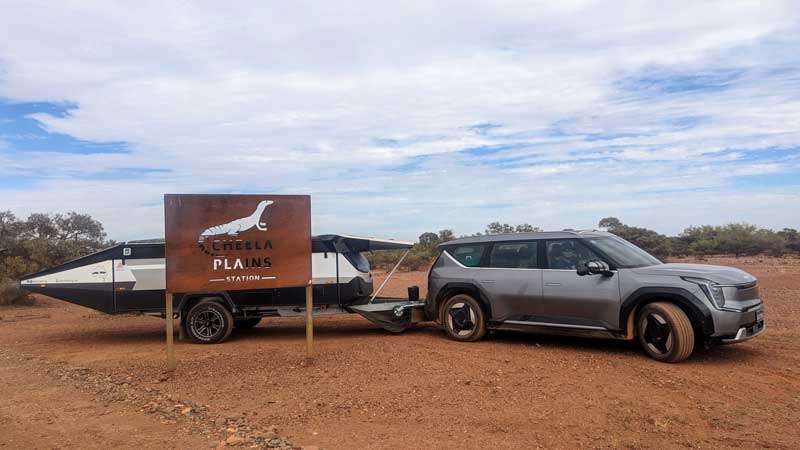
Planning your route is a vital part of any camping trip, and when you're driving an EV, a little extra consideration ensures smooth travels. Whether you're heading for the coast or the hills, modern EV technology and smart tools make it easier than ever to reach your destination — and enjoy the journey.
One of the best ways to start your planning is by using an EV-specific navigation tool such as A Better Route Planner (ABRP). This app allows you to enter details about your vehicle, your payload (especially important if you’re towing), and even road conditions including seasonal or realtime weather using the app’s premium subscription. It can adjust your route and charging stops based on the increased energy use, giving you a realistic picture of your trip.
Heading into the high country? EVs have an advantage many drivers overlook — regenerative braking. This feature means that on the way back down from a mountain or hilly area, your vehicle will actually recharge the battery as it descends. So, while climbing eats into your range, the descent can help you claw some of it back.
When venturing onto dirt or gravel roads, it's crucial to remember that energy use increases due to reduced traction and greater rolling resistance. What feels like a short jaunt into the bush might eat up more battery than expected. Always leave a buffer — 20% or more of your range — especially when driving in remote or unsealed conditions.
And don’t just plan how to get to your destination — plan how you’re going to get back. Always know where the nearest DC fast charger is, and make sure your return trip includes ample power to reach it. If you’re going bush, consider bringing a solar panel setup to supplement your power requirements or to boost the EV battery; note, these options are more niche and may require specialist gear.
For multi-stop adventures or full road trips, check out resources like our EV road trip guide , which includes more details about how to plan your route, different charger types and gear guides, and tips for EV travellers across Australia.
When it comes to charging, the good news is that many campgrounds already have infrastructure in place. Standard 15-amp power outlets, used by caravans and camper trailers, are becoming more common. With the right equipment — a 15-amp tail for your mobile charger and a heavy-duty extension cord (especially handy when your mobile cable plug won’t fit the 15 amp outlet housing) — you can plug your EV into these outlets. Just be sure to check with the park before arrival, as not all sites permit EV charging from these sources.
It’s also important to be considerate: EVs tend to draw more power than typical caravans, so offering to pay for your electricity usage is good etiquette. Keep in mind that charging from a 15-amp outlet is slow — it may take 8 to 20 hours depending on your EV’s battery size and how depleted it is — so plan for overnight charging rather than top-ups on the go.
There are also increasingly more campgrounds and caravan parks – NRMA Parks and Resorts included – now have AC destination chargers that can significantly reduce charging times (ring ahead to check whether you need to BYO cable.) As the EV tourism trend grows, expect even more campgrounds to follow suit.
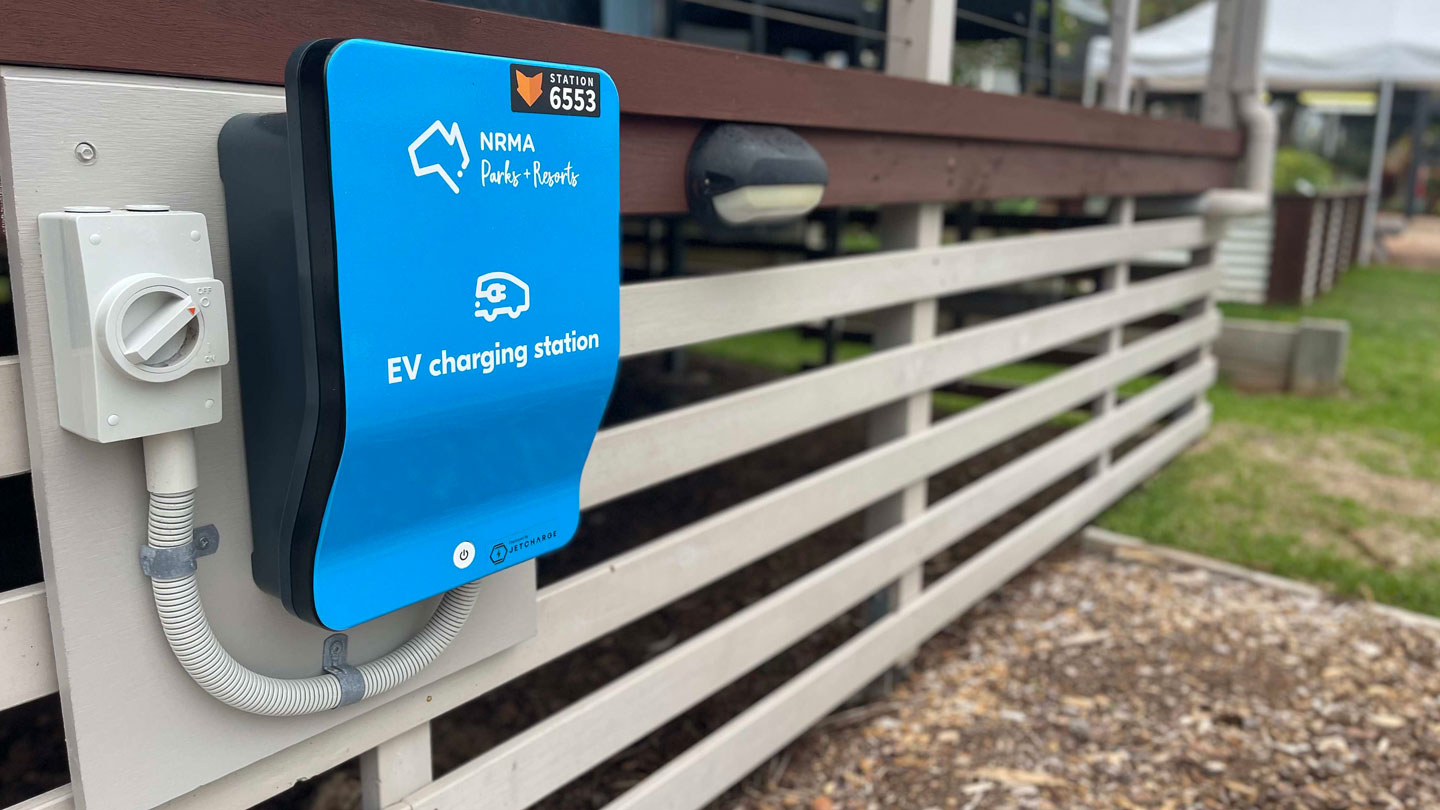
Whether you’re exploring lush rainforests, rugged Australian bushland, or beachside hideaways, EV camping is no longer a novelty — it’s becoming a smart, practical, and eco-friendly way to travel. With the right prep, your EV becomes not just a means of transport, but a power source, a movie theatre, a bedroom, and a comfy refuge from the elements.
So pack your sleeping bags, charge up your EV, download your maps, and head for the great outdoors. The campground is waiting — and now, it can be quieter, cleaner, and more peaceful than before.